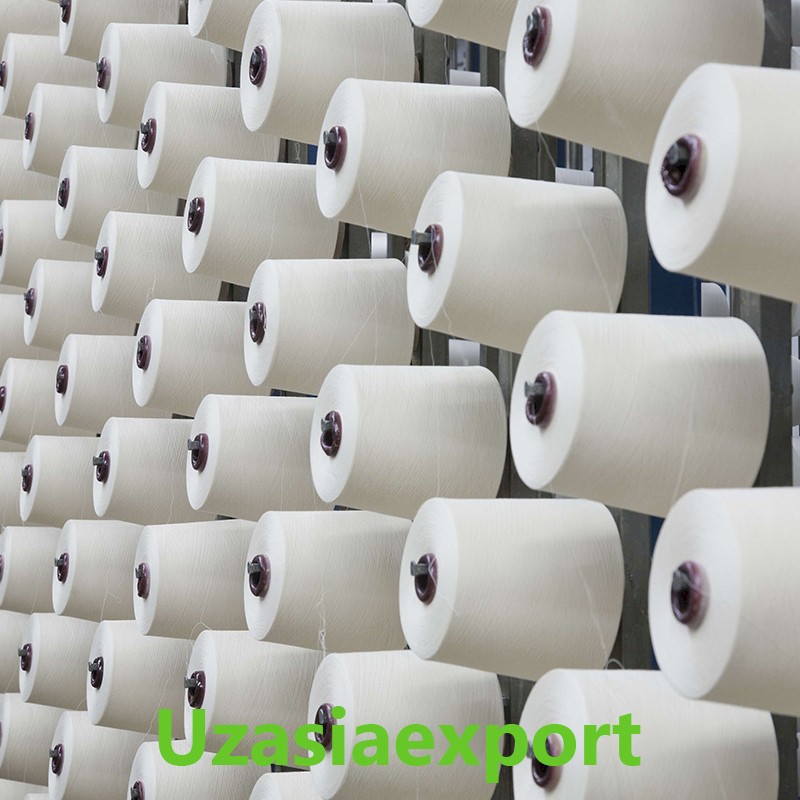Yarn
-
Product category:Textile
-
View (Varieties): Melange yarn
Small description
Purpose: combed/carded
Material:
- 100% cotton
- 100% viscose
- 100% Polyester
Fiber dyes: Active
Color: Enterprise color base map; according to physical pattern
Number of additions: from 2 to 8
|
Name of product |
Blended melange yarn |
|
Yarn count (Ne, Den, Tex) |
Ne12 - Ne 40 |
|
Spinning system |
Carded / Combed |
|
Spinning method |
Ring spinning/Pneumo-mechanical |
|
Package shape |
Tapered/cylindrical |
Cotton yarn (cotton yarn) is made from natural vegetable raw materials - cotton. Due to its environmental friendliness and properties, cotton yarn is the most popular material for the production of various textile products.
Yarn from 100% viscose. Viscose is a material made from natural cellulose, which first appeared in the late 19th century. Viscose yarn is a regenerated cellulose, that is, the composition of viscose is very close to the composition of natural plant fibers. Viscose is the most natural of all chemical fibers. Depending on the process and further destination, viscose fibers are shiny or matte. Viscose yarns can be given a "silk", "cotton" or "wool" character by changing the sheen, fineness and crimping of the fibres.
The main advantages of viscose:
- soft and pleasant to the touch,
- breathable, great for spring-autumn and summer outfits.
- hygroscopic.
- high intensity of color allows to create products of bright coloring.
- does not accumulate static electricity.
100% polyester yarn belongs to the group of synthetic fibers, it is often called differently - "dacron". On the labels of such yarn, you can also see the designations "polyester" or "PEF"
By its thermal conductivity, this yarn is very similar to wool. The appearance of 100% polyester products also resemble wool products. Among the positive properties are the following
-Elasticity.
-Elasticity.
-Indelible.
-High resistance to direct sunlight, mold, insects and various microorganisms.
Melange yarn is a thread of fibers of different colors or twisted yarn of threads of different colors. Those. yarn gets color before spinning...
First, fibers or threads are dyed, and only then yarn is made from them for knitting.
Melanging - mixing of raw cotton fiber with dyed in various colors, harsh or dyed chemical fiber with cotton. Different percentages of gray and dyed fiber in the mixture give a wide range of colors that cannot be obtained by dyeing. By mixing two or more components of different colors, you can get yarn of new colors with an interesting and original effect. Melange production is a production with a complete technological cycle, that is, a plant that includes a dyeing department, spinning, weaving and finishing factories. The range of yarn used in melange production is very diverse. As a basis, as a rule, twisted yarn in two additions is used. Weft yarn can be single and twisted. The range of linear densities of the produced yarn is very large - from 15.4 to 100 tex.
In melange production, the following varieties of carded yarn are used:
- melange, consisting of fibers of different colors. For example, mixing white and black fibers in various proportions can produce a range of shades of gray, and mixing a small amount of white and colored fibers can produce a fabric with a "sparkle";
- colored, obtained from cotton fiber dyed in one color;
- dyed, obtained by dyeing gray yarn;
- harsh, obtained from harsh cotton fiber;
- "jaspe", obtained from two rovings of different colors.

